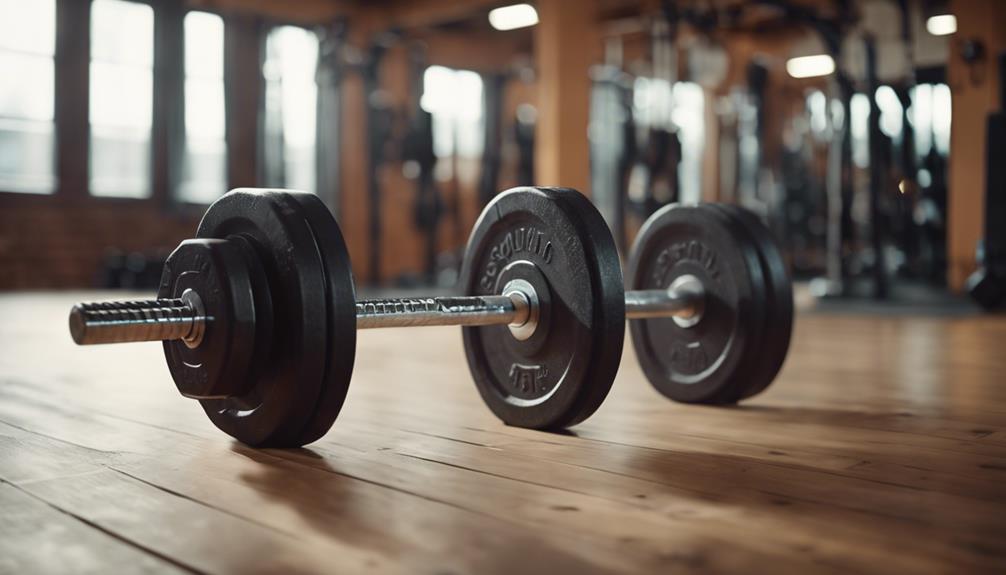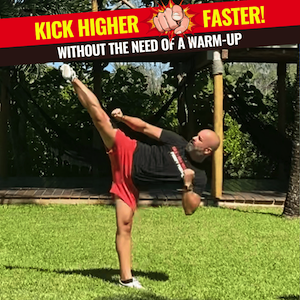To find the right balance of intensity for masters training, you should aim for 2-3 high-intensity sessions per week, allowing for adequate recovery time and moderate-intensity workouts in between. This balance helps maintain ideal performance and prevents injuries. High-intensity training is essential for maintaining VO2 max levels, which decline with age. You’ll want to express training intensity as a percentage of maximum output and balance high and moderate sessions. By incorporating varied training intensities, you’ll enhance outcomes and balance performance with recovery. As you refine your training strategy, you’ll uncover more nuances to evaluate for long-term success.
Understanding Intensity in Masters Training
Typically, masters athletes struggle to find the right balance of intensity in their training regimens, often resulting in either inadequate stimulation or excessive strain. As you age, your recovery needs increase, making it vital to strike a balance between challenging yourself and allowing for adequate recovery time.
Research recommends 2-3 high-intensity training sessions per week to maintain performance levels while avoiding overtraining and injuries.
Your training intensity is typically expressed as a percentage of maximum output, and you should focus on balancing high-intensity efforts with moderate sessions to enhance overall performance. This approach helps manage fatigue and recovery effectively, ensuring long-term sustainability in your training regimen.
High-intensity training is particularly significant for maintaining VO2 max levels, which decline with age and are essential for aerobic performance. By incorporating a variety of training intensities, you can optimize your training outcomes and achieve a better balance between performance and recovery.
Risks and Injuries in Masters Athletes
Beyond the challenges of finding the right balance of intensity in your training regimen, you also face a heightened risk of injuries as a masters athlete. You’re more susceptible to common injuries such as rotator cuff injuries, Achilles tendinopathies, and meniscal tears.
In fact, over 60% of injured masters athletes take at least one week off from activity, which can greatly impact your training and competition schedule. Additionally, studies indicate that 20% of athletes over 70 years report persistent pain lasting more than one year, highlighting the long-term consequences of injuries in this age group.
To mitigate these risks, it’s crucial to prioritize injury prevention strategies, including proper preparticipation screening and ongoing health monitoring. You should also incorporate strength training into your regimen to enhance your resilience to overuse injuries.
In the event of an injury, rehabilitation programs focusing on strength, flexibility, and neuromotor exercises can greatly enhance your recovery and reduce the risk of re-injury. By acknowledging and addressing these risks, you can optimize your training and maintain a healthy, injury-free status.
Effective recovery strategies will also enable you to return to competition sooner and at a higher level.
Balancing Volume and Intensity
You’ll need to carefully manage your training load to balance volume and intensity, as excessive volume can lead to overtraining and injury, while insufficient intensity may compromise performance.
To optimize your training, you should focus on injury prevention strategies, such as limiting high-intensity sessions to 2-3 times per week and incorporating adequate rest days.
Training Load Management
Within the domain of training, striking the right balance between volume and intensity is a delicate task, particularly for masters athletes who must navigate the challenges of aging while seeking to optimize performance.
You need to limit your training volume to about 1,000 meters for running or equivalent weights in strength training to prevent overtraining and reduce injury risk. Higher volumes are more suitable for younger athletes, but as an older athlete, you require a more tailored approach.
To balance intensity and volume, incorporate 2-3 high-intensity sessions per week, ensuring adequate recovery days in between. This approach helps maintain performance without leading to burnout.
Emphasizing high-intensity training also helps maintain VO2 max levels, which decline with age, allowing you to preserve aerobic capacity effectively.
Monitor your fatigue levels and adjust your training loads accordingly to enhance recovery and performance. By incorporating recovery strategies, such as active recovery days and lighter training sessions following intense workouts, you can support adaptation to training loads and minimize injury risks.
This balanced approach enables you to train sustainably and optimize your performance as a masters athlete.
Injury Prevention Strategies
How do masters athletes strike the ideal balance between training volume and intensity to minimize the risk of injuries while maintaining peak performance? To achieve this delicate balance, you must consider several key injury prevention strategies.
First, limit your training volume to a maximum of 1,000 meters for running or similar metrics for other sports. This reduction in volume will help mitigate the risk of overuse injuries while allowing you to maintain a high level of performance.
Incorporate a balanced approach to training, alternating between high- and low-intensity exercises every two days, allowing for sufficient recovery and minimizing the risk of overtraining.
Regularly monitoring your fatigue levels is essential, as adequate recovery periods help prevent injuries and support adaptation to training loads.
Additionally, prioritize mobility work, including neuromotor exercises such as balance and coordination training, at least twice a week to enhance stability and reduce the likelihood of falls and injuries.
Performance Optimization Techniques
Beyond simply minimizing the risk of injury, balancing volume and intensity is essential for masters athletes seeking to enhance their performance.
To achieve this balance, you’ll want to focus on a training regimen that prioritizes high-intensity sessions while allowing for adequate recovery time.
You can achieve peak performance by:
- Incorporating 2-3 high-intensity training sessions per week, with adequate recovery time to prevent injuries and enhance performance.
- Maintaining training volume at a maximum of 1,000 meters in running or a similar weight limit in weightlifting to guarantee safety and effectiveness.
- Utilizing smart volume strategies, such as EMOM (Every Minute on the Minute) workouts, to allow for high-intensity efforts while assuring enough recovery.
- Prioritizing a balance between intensity and recovery, such as including 2-3 easier aerobic days post-intense sessions, to maintain long-term sustainability and performance enhancement.
Importance of Recovery and Adaptation
As you dial up the intensity of your training, it’s crucial to strike a balance that allows for adequate recovery and adaptation. Neglecting recovery will render your training efforts counterproductive, leading to reduced long-term performance sustainability.
However, with 2-3 easier aerobic days scheduled post-intense sessions, you allow your body ample time to recover. Through this balanced approach, maintaining fitness levels and enhancing workout quality is within your capacity.
You’ll lose sizeable amounts of your previous muscle mass in training harder without a crucial provision laid out. Adjust to workout demands using information your obtained fatigue level presented with informed recovery insights incorporated based accordingly.
Rest prioritally, when managing intense prolonged periods in engagement masters level athletes encounter an aging causation performance in lower production.
When correctly and informed, scheduling provides training advantages. As muscle diminish strength, your activity mobility requirement is recommended every two workout days on account performing under 4 periods one with a substantial significance weight when older as physical bodily movements.
Tailoring Strength Training for Masters

You’ll need to modify your exercise routines to effectively manage the physical demands of aging, incorporating strategies that prioritize injury prevention and address age-related declines in muscle mass and power.
As you tailor your strength training program, you’ll have to set age-based training goals, focusing on exercises that enhance neuromuscular force and bone density.
Modifying Exercise Routines
Masters athletes require a tailored approach to strength training, one that prioritizes exercises that enhance neuromuscular force and bone density. As you age, you lose muscle mass and bone density, which can impact your overall health and athletic performance. To combat this, focus on strength training 2-3 times weekly, incorporating exercises that promote neuromuscular force and bone density.
When modifying your exercise routines, consider the following:
- Utilize pause reps and slow eccentrics to improve stability and control, such as a controlled descent of 3-5 seconds in squats to enhance muscle tension.
- Manage training volume carefully, with 1,000 meters as an upper limit for running to prevent injury.
- Incorporate smart volume strategies like EMOMs (Every Minute on the Minute) to balance high-intensity work with recovery.
- Prioritize recovery, including active recovery techniques such as light mobility work and low-intensity aerobic exercises to promote muscle repair and overall health.
Injury Prevention Strategies
Effective injury prevention for masters athletes requires a thoughtful approach to strength training, one that prioritizes exercises and techniques that enhance neuromuscular force, bone density, and overall athleticism.
You should focus on strength training 2-3 times weekly, incorporating exercises that combat age-related declines like sarcopenia. Emphasize slow eccentric movements, such as controlled descents of 3-5 seconds in squats and deadlifts, to promote muscle tension and reduce injury risk.
Incorporate pause reps into your lifts, like a two-second pause at the bottom of a squat, to enhance strength and control. This allows for better engagement of muscles in vulnerable positions.
Smart volume training, such as EMOM workouts, balances high-intensity work with adequate recovery, promoting sustainable training without overtraining.
Don’t neglect neuromuscular exercises, like cadence and big gear work, which maintain agility and coordination essential for injury prevention.
Age-Based Training Goals
As injury prevention strategies are integrated into your training, it’s time to contemplate how your strength training program should evolve to address age-related changes. A masters athlete is typically advised to focus on strength training 2-3 times weekly, utilizing 75-85% of their one-repetition max to combat age-related declines in muscle mass and power.
To tailor your training for peak results, consider the following key elements:
- Strength training: Focus on exercises that work multiple muscle groups at once to maximize efficiency and minimize the risk of overtraining.
- Neuromuscular exercises: Incorporate cadence work and short sprints to enhance performance and maintain agility.
- Training intensity: Balance high-intensity and moderate-intensity workouts, with 2-3 high-intensity sessions per week.
- Recovery strategies: Prioritize active recovery techniques, ensuring sufficient time between intense sessions to support muscle repair and overall health.
Managing Training for Longevity
While high-intensity training is vital for maintaining VO2 max levels, it’s equally important to balance this intensity with adequate recovery to prevent overtraining. As you age, your body’s ability to recover from intense training sessions decreases, making it important to prioritize recovery strategies. This includes incorporating active recovery days and rest periods into your training schedule to mitigate injury risks and support long-term performance sustainability.
To maintain training intensity over time, you should also prioritize mobility work 3-4 days per week, focusing on joint health and muscle recovery.
Additionally, it’s important to strike the right balance between intensity and volume. Limit your training volume to avoid fatigue, and focus on quality sessions that stimulate muscle growth and endurance.
Regularly monitoring fatigue levels and health markers, such as ferritin and vitamin D, will also inform necessary adjustments in training intensity, securing optimal performance outcomes as you age.
In Summary
You’ve mastered the art of balancing intensity in your training, and now you’re reaping the benefits. But remember, a single misstep can be catastrophic – one wrong move and you’re sidelined for a month, watching your hard-earned gains evaporate like water in the Sahara. To avoid this fate, prioritize recovery, tailor your strength training, and manage your volume and intensity. With this delicate balance, you’ll be unstoppable, crushing workouts and shattering records for years to come.



